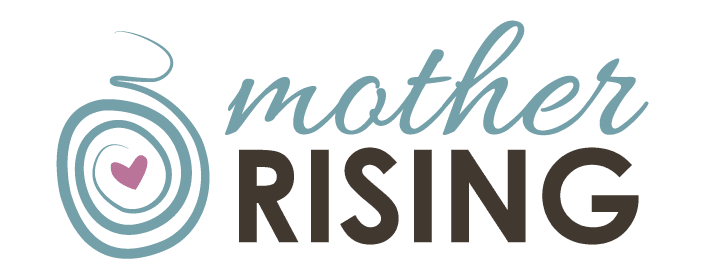In my childbirth classes I teach the best labor breathing technique. It’s extremely effective, women all over the world use it in labor without knowing what it is, it’s easy to learn on the spot in labor, and can carry a women through the bulk of her labor and delivery.
Not only is this labor breathing technique excellent for a natural birth, but it’s also amazing for a medicated or even a cesarean birth.
No matter what type of birth you are planning, this simple and effective labor breathing technique is for you.
The Best Labor Breathing Technique
In this post I will teach you the ins and outs of a pain coping practice (aka labor breathing technique) called breath awareness that is helpful for coping as soon as signs of labor begin. Let’s get started!

Breath Awareness
Instead of continuing to describe breath awareness, I thought I would simply lead you through it. What I’d like you to do is SLOWLY read the following prompts below and IMMEDIATELY put into practice what you read. Even better, if possible, have your partner slowly read it to you.
TIP: If someone reads to you, close your eyes or find a focal point to rest the eyes on.
Simply bring your awareness to your breath, and pay attention to what it’s already doing. There’s no need to change anything, just notice what’s already happening.
Notice how fast or slow each breath is. Pay attention to the pace. See if there is a rhythm… or not. It doesn’t really matter if there is, just notice what the breath is already doing.
Notice how long or short each breath is.
Sometimes, when doing breath awareness the breath begins to change all by itself to slower, deeper breaths. If that happens, simply notice and watch what it does.
Keep going…
If you find your mind wandering, no worries. Just bring your focus right back to your breath.
Now, notice your outward breath. Notice how long or short it is. The outward breath is the breath of surrender… of letting go.
That, in a nut shell, is breath awareness – my absolutely favorite go-to labor breathing technique. Now, breath awareness sounds super simple, and it is, but putting it into practice may take a bit of work.
The thing is, breath awareness is a simple practice that demands us to be aware and live in the present moment. Our modern culture does not cater to this way of being, so by learning breath awareness we are taking a step in a completely different direction.
But here’s the kicker, when in labor one of the best things to do to prevent suffering is to be in the present moment. It’s when we start anticipating the future, we begin to suffer.
“If it took me five hours to get to five centimeters, that means it’ll take me another five to get to ten centimeters. I can’t do that! There’s no way!
^^^ is an example of how not living in the present moment causes suffering in labor. I hope this is starting to make sense.
How to Learn Breath Awareness as a Labor Breathing Technique
Here’s where things start to get fun. Now that we know how to do breath awareness, we need to practice it for labor. And the best way I know how to learn and use breath awareness as a labor breathing technique is to practice it during pregnancy while holding ice.
Now don’t get me wrong, labor doesn’t feel like holding ice. At all. BUT, what holding ice does is it allows you to feel pain and discomfort. And once you’re feeling pain and discomfort, and also paying attention, you can begin to notice what is happening in your mind while you hold the ice.
You will begin to notice what you’re telling yourself about your discomfort, things you do to try to make it better or easier, and even your physical reaction to holding ice (tension in the shoulders, neck, face, etc.).
Once we begin to pay attention to our experience of pain, we can learn better ways of coping for a future labor and delivery.

Hold Ice for One Minute
To get started, the first thing I need you to do is to hold ice for one minute. The reason why I use a minute is because that is the average length of a contraction. In early labor contractions average around 30 seconds and during transition they may be as long as 90 seconds, but in active labor the average length of a contraction is 60 seconds.
TIP: For a great overview of labor and what to expect, check out my post A Doula’s Guide to the Stages of Labor.
TIP: I highly recommend doing all these exercises in this blog post alongside a partner, friend or someone who will be attending your birth. No, they won’t be experiencing labor the same way as you, but they too need to learn how to stay present. The more present your support team is, the more they will be able to support you through your process.
Step 1
Get set up. Grab a cup of ice and a towel to catch the drips. You can sit or stand, it doesn’t really matter.
Step 2
Start a timer for one minute.
Step 3
While the timer begins, grasp the ice firmly in one hand for one minute. After the minute is over, put everything down.
Step 4
Without judgement, notice what stood out to you during that minute. What was working or not working?
Hold Ice for One Minute with Breath Awareness
Now that we’ve held ice for one minute, I want to do the same thing but this time I want to add breath awareness to the “ice contraction”. Let’s do it!
Step 1
Get set up.
Step 2
Begin breath awareness for at least 30 seconds.
Step 3
Start the timer.
Step 4
Grasp the ice firmly in one hand for one minute.
Step 5
Without judgement, notice what stood out to you during that minute. What was working or not working? Was anything different this time? If applicable, discuss what was noticed with your partner.
Partner Work
Now that we’ve played with breath awareness while holding ice, I would like to add one more element to the mix. This time I would like you to face your partner and have him or her help you through the next ice contraction by them helping you do breath awareness.
The easiest thing for them to do is to read the following prompts during the next “ice contraction”.
TIP: The following exercise may feel odd or awkward at first, which makes perfect sense! Most people don’t sit around with their loved ones breathing and holding ice. Keep trying, despite any odd feelings, because it will get easier. And the more you practice, the easier this will be in labor… which is what we want!
Simply bring your awareness to your breath, and pay attention to what it’s already doing. There’s no need to change anything, just notice what’s already happening.
Notice how fast or slow each breath is. Pay attention to the pace. See if there is a rhythm… or no rhythm. It doesn’t really matter if there is, just notice what the breath is already doing.
Notice how long or short each breath is.
Sometimes, when doing breath awareness the breath begins to change all by itself to slower, deeper breaths. If that happens, simply notice and watch what happens.
Keep going…
If you find your mind wandering, no worries. Just bring your focus right back to your breath.
Now, notice your outward breath. Notice how long or short it is. The outward breath is the breath of surrender… of letting go.

Mastering the Labor Breathing Technique
Now that you have learned breath awareness, held ice for a minute while doing breath awareness and then involved your partner, let’s talk about how to make breath awareness the best labor breathing technique for a natural birth.
To master breath awareness, one simply needs to practice it daily. And the best way to practice breath awareness daily, is to incorporate it into a daily activity.
For example, practicing breath awareness during the morning commute would be an easy way to remember to do it, and it would likely calm the mind and body. Who knows, you may end up enjoying the commute!
Other ideas could be washing dishes, during an evening walk, while falling asleep for the night, etc.
Pick any daily activity and commit to practicing breath awareness at the same time. When this practice is in place, breath awareness will become “just something I do”. When it comes time for labor and delivery, instead of thinking about how to cope, your body will just do it.
And that is how you use breath awareness, a simple and effective labor breathing technique, for a medicated, unmedicated or cesarean birth.
Leave a Comment
If you don’t mind, I’d love for you to leave a comment with your experience with a labor breathing technique. I’d love to hear your story!

Brittany
Saturday 1st of December 2018
I am a doula and will be practicing this with my clients. Wonderful exercise, thank you!
Lindsey
Saturday 1st of December 2018
You're welcome!
Kay
Monday 16th of July 2018
33 weeks here and found this article on Pinterest. I decided to give this a try because I'd really like to acheive an unmediated birth and need all the techniques I can get.. this one stuck out to me because I HATE being cold! Even though it was one minute, I found myself letting my brain focus on the pain and closing my eyes actually made the pain worse than if I opened them. Looking directly in my husbands eyes during the timeframe helped tremendously as well! I also had my husband try it so he could get the same experience first hand, that way he has an idea of how to coach me through the pain.. he actually found comfort closing his eyes during the one minute.
Lindsey
Monday 16th of July 2018
Isn't it interesting - our responses to pain? It's also interesting that others have their own responses too. Play around with this, keep exploring and be curious about pain coping. You're on to something here. :)
Gabby
Friday 16th of February 2018
I'm about 20 weeks pregnant with my first, so still prepping for the eventual labor, but our doula did the ice activity with us during her class, and it was interesting to see how applicable my usual relaxation habits were. I'm already used to focusing on my breathing to calm myself. I have, however, been practicing it in a new setting: on the toilet! (Sorry) I have found it immensely helpful to focus not on straining, but on breathing, and I suspect from descriptions that this is similar to what happens in labor?
Michael Robinson
Wednesday 15th of November 2017
Thanks for your advice on how to breath when going through labor. My wife has been having contractions that have been really tough for her, and so I think that I will remind her to breathe in a calming voice to help her know that I am there for her. One thing that I think will really help her through these contractions is by repeating these words that you wrote out about getting her to focus solely on her breathing. Thanks again for the information!
Lindsey
Thursday 16th of November 2017
You're welcome!
clara
Monday 25th of September 2017
Very useful tips. I think the breathing technique is the best. It relieved me of my labour pain on my two deliveries.